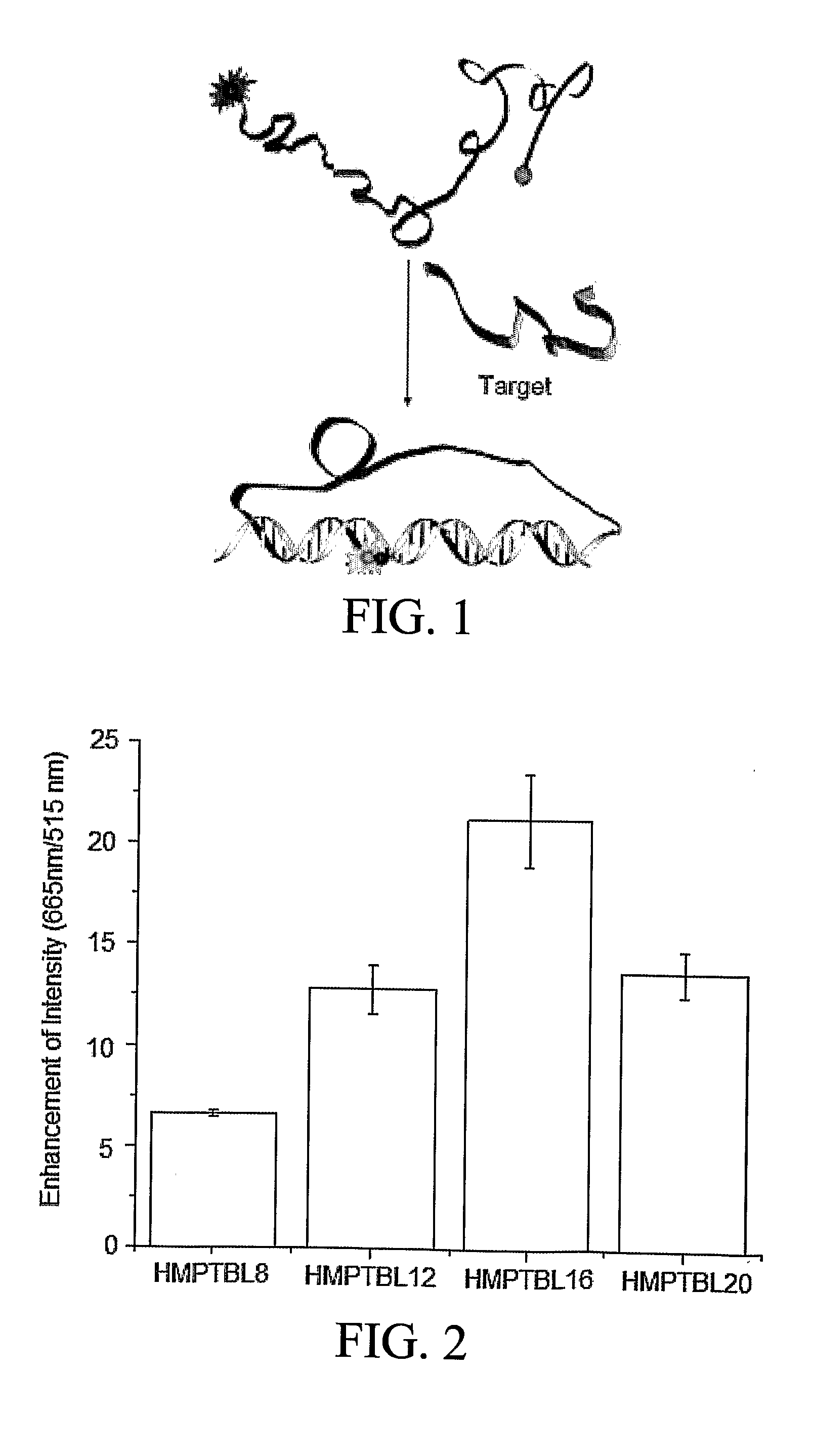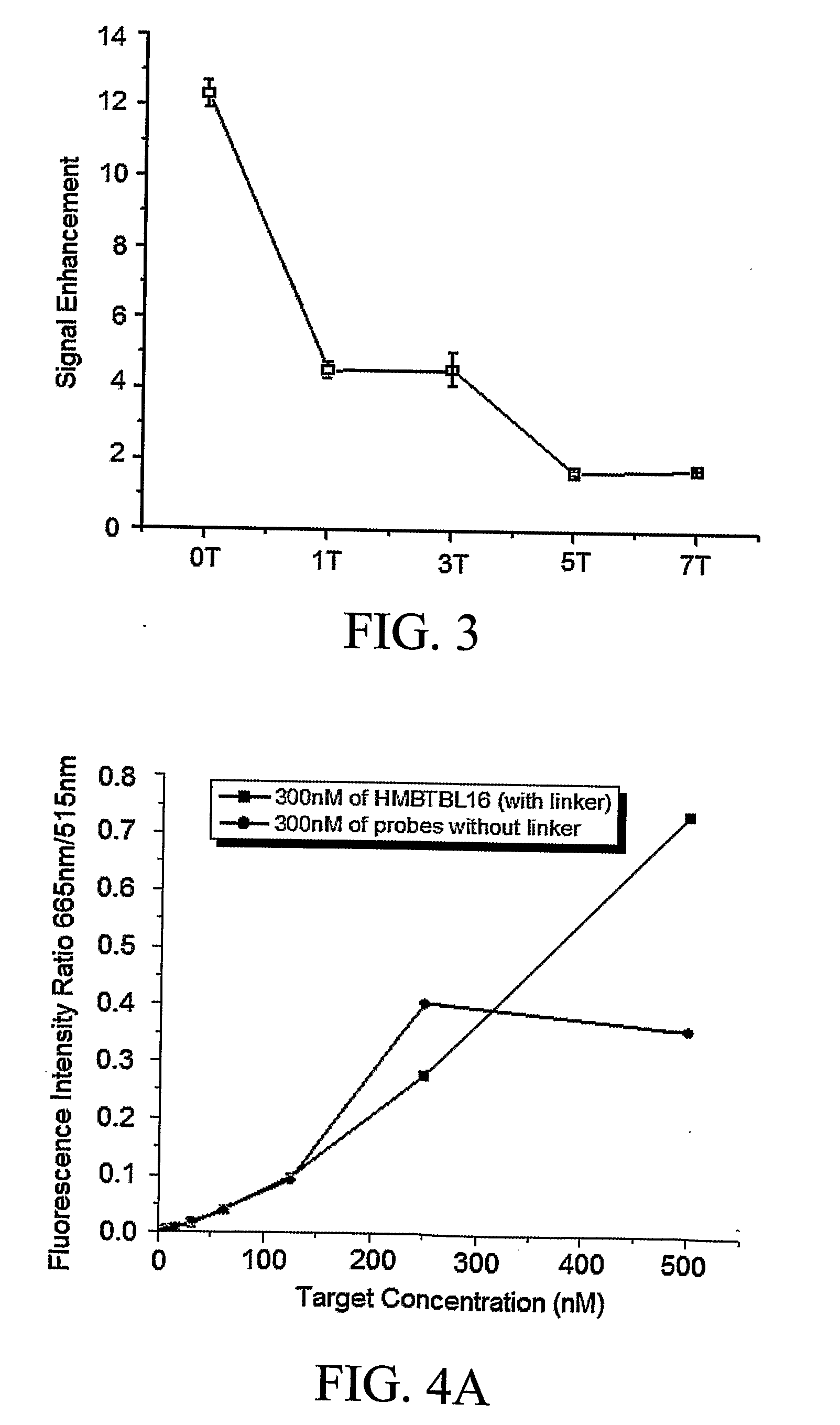Hybrid Molecular Probe
- Summary
- Abstract
- Description
- Claims
- Application Information
AI Technical Summary
Benefits of technology
Problems solved by technology
Method used
Image
Examples
example 1
[0057]To demonstrate how a hybrid molecular probe of the invention functions, the following sequence was synthesized to target Tublin mRNA(516-551): 5′-Cy5-CTC ATT TTG CTG ATG AGC-(X)n-CTG TCT GGG TAC TCC TCC-FAM-3′ (SEQ ID NO. 6), where X stands for a PEG synthesizing monomer unit (Glen Research, Sterling, Va.), n represents the number of PEG monomer units. Every PEG monomer unit has a length of about 22 Å and the PEG linker is flexible so as to allow free movement of the two DNA sequences.
[0058]Several criteria are considered when selecting a donor / acceptor fluorophore pair for a probe of the invention to ensure good signal-to-background ratio. First, there should be a significant spectra overlap between the donor and acceptor dyes. Second, absorption of acceptor at donor excitation should be negligible. And finally, their fluorescence emission spectra should be completely separated and hence any false positive signal from the acceptor is considerably reduced...
example 2
Hybrid Molecular Probe Immobilization
[0066]A HMP probe was prepared with the same sequence as HMPTBL except that there were two biotins inserted in the middle of linker PEG units. Two biotins were used for one sequence to improve the binding efficiency. Before immobilization onto a streptavidin-coated surface, a solution test was performed, which showed similar signal response of the probe to the probe without biotin. This indicated that the inserted biotin in between the linker did not interfere the binding of probe to its target.
[0067]FIG. 8 is the response of the immobilized probe upon the addition of target DNA. The surface was excited at 488 nm, and the images were monitored at two emission channels specific for FAM and Cy5 respectively. Before the hybridization, fluorescence signal from FAM was strong and week emission from Cy5 was observed. Immediately after addition of target c-DNA, the intensity of FAM diminished and the intensity of Cy5 increased as a result of hybridizati...
PUM
| Property | Measurement | Unit |
|---|---|---|
| Flexibility | aaaaa | aaaaa |
| Resonance energy | aaaaa | aaaaa |
| Distance | aaaaa | aaaaa |
Abstract
Description
Claims
Application Information
 Login to View More
Login to View More - R&D
- Intellectual Property
- Life Sciences
- Materials
- Tech Scout
- Unparalleled Data Quality
- Higher Quality Content
- 60% Fewer Hallucinations
Browse by: Latest US Patents, China's latest patents, Technical Efficacy Thesaurus, Application Domain, Technology Topic, Popular Technical Reports.
© 2025 PatSnap. All rights reserved.Legal|Privacy policy|Modern Slavery Act Transparency Statement|Sitemap|About US| Contact US: help@patsnap.com



